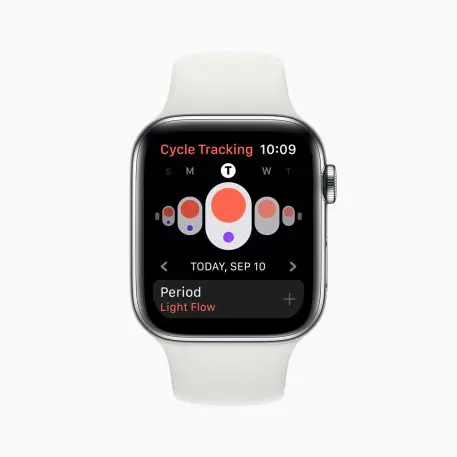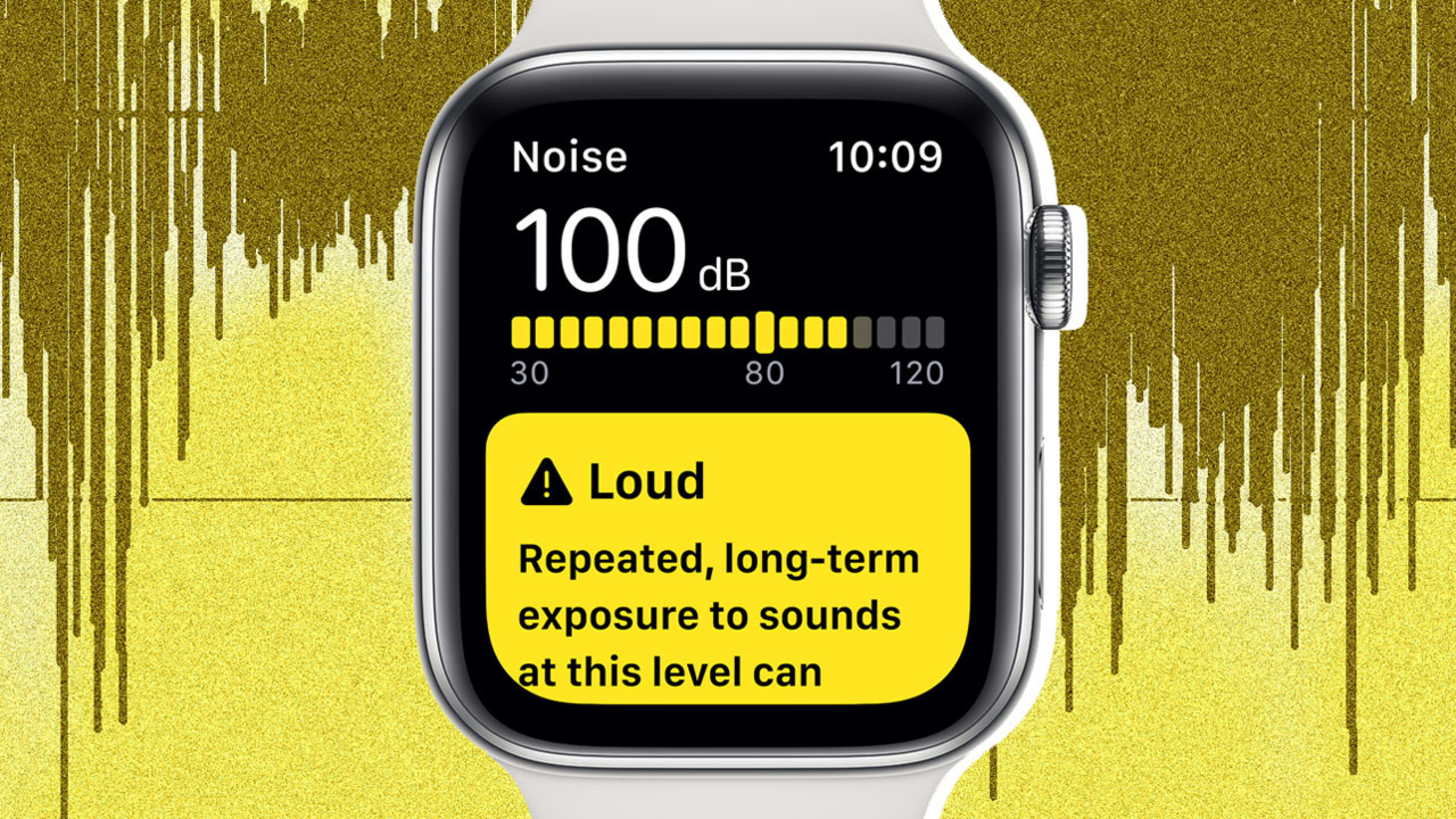Earlier this week, Apple announced it was launching three research studies that anyone can participate in simply by using their Apple Watch.
The three studies will focus on women’s menstruation and overall health, everyday noise exposure and hearing loss, and the relationship between movement and heart health. With these new research initiatives, Apple appears to be leaning away from providing Apple Watch features that appear diagnostic in nature and into field work that takes advantage of its ability to collect a lot of information about a lot of people.
The announcement is a departure from its previous study, which focused on whether the Apple Watch could work as a screening tool for irregular heart beats, which is known as atrial fibrillation. The study was criticized for failing to assess how often the Apple Watch failed to detect atrial fibrillation or how often it falsely detected these heart abnormalities. As a result, there was concern that the Apple Watch might send people to the doctor unnecessarily, and worse, potentially harm their health if a doctor used false positive data to put a patient on heart medication they didn’t need.
But in this new set of studies, Apple is stepping back from framing the Watch as a medical device with a powerful algorithm that can accurately detect heart abnormalities. Instead, the Watch will act as a data collector, leaving the experts to analyze what the data means. The shift potentially allows Apple to occupy more of the spotlight and maybe court less controversy. Doctors and researchers working on the projects are excited because the studies have the potential to give them insight into patient health they currently just don’t have.
Apple Watch data could answer a lot of big questions
All three of the new studies come with big name partners, including Harvard, the American Heart Association, and the World Health Organization. Researchers working on the studies are, not surprisingly, enthusiastic about getting access to the Apple Watch data.
“Until a couple years ago, we had 40-year-old estimates on national noise exposure,” says Rick Neitzel, the associate chair of environmental health sciences at the University of Michigan, and the leading researcher on the Apple hearing health study. The Department of Transportation recently released national estimates around noise exposure, but it only covers roadway and airport noise. The Apple study aims to look at a much broader range of data, including people’s exposure to harmful noise from listening to music, spending time in the workplace, and participating in other recreational activities. “These are giant black boxes that we know nothing about,” Neitzel says. As of now, it is unclear how Apple will collecting data about noise, though the company presumably will utilize the Apple Watch’s microphones.
Shruthi Mahalingaiah, a faculty member of Harvard’s public health school and a researcher on Apple’s women’s health study, expressed a similar sentiment. “Large cohorts, even ones focusing on women’s health, have not asked about or gotten really good data on the menstrual cycle,” says Mahalingaiah. She says we don’t know much about how women’s gynecological health interacts with or affects overall health, not just in young menstruating women, but post-menopausal women as well.
All three studies could benefit from being able to pull data from a diverse population. “Information from everybody is really important. That’s one of the things that’s different about a study like the Apple heart and movement study,” says Calum MacRae, vice chair for scientific innovation in the department of medicine at Brigham and Women’s Hospital. “We’re not making assumptions about who’s in it or what the information might [look like] that would be relevant at the start.” Instead, his study on heart health and movement will focus on looking at whatever the data happens to reveal. The hope is that he and his team will be able to spot early warning signs of heart-related illness for a wide range of people.

The challenges of crowd-sourcing big data
Of course, there is a question of how useful this broad, sometimes anecdotal information is, and some researchers expressed doubt about whether using Apple devices to collect data would provide skewed results.
“Sampling of people is a possible issue,” says Charles Branas, the chair of the department of epidemiology at Columbia University’s Mailman School of Public Health, who is not participating in any of the Apple studies. “For instance, if only wealthier people can afford mobile devices with the best GPS, then the studies that emerge will mostly apply to wealthier people.” However, he also believes that generally Apple’s decision to provide Apple Watch data to researchers is a good one. In the past, he’s found this technology useful in research: one of his research groups used wearables to determine that people’s heart rate decreases when walking in parks and green spaces.
For now, Apple and the institutions involved in these studies are being very tight lipped about how exactly the research will be conducted or what specific data will be gathered. However, users will have ultimate control: you will have to actively download Apple’s research app when it arrives and then opt into the studies for your data to be used. You will also have to indicate, as you would in any study, which information you are comfortable sharing and which data you are not. All of the researchers I spoke with said they felt the privacy controls were up to clinical standards, though Branas expressed some uncertainty about widespread evidence that even anonymized data can be re-identified.
“Confidentiality is a quandary and even though no names accompany this mobile data, it is possible to infer where people spend a lot of time—for example, potentially their homes,” he says.
There is another potential issue with collecting data from participants remotely: that it might rely on flawed, self-reported information. For instance, if the study relies on women entering their menstruation cycles into an app, some people may be less diligent than others about keeping records. “If people are not acting how they’re supposed to or they’re not using a device the way it’s supposed to, then the data we get is not going to be great,” says Neitzel, who is working on the hearing study.
But, he says, the benefit of crowd-sourced data is that the data sets are so large that the fraction of people who don’t participate in the study the way researchers might expect them to are likely to be averaged out by the majority who do. The Watch has the potential to collect a lot of data and it is this very vastness—like the ability to estimate noise exposure based on neighborhood—that is so compelling to researchers. “We can make a lot of sense, and even make some inferences, even though a chunk of the data may not be pristine,” Neitzel says.
The Watch as the gateway to health
In addition to getting access to big data, the researchers see another opportunity: to influence how people take care of themselves. “This has to have some sort of impact on improving lives,” says Mahalingaiah. Though the studies are very much about seeking out health insights right now, she hopes that eventually the work can translate into practical information that can help people make decisions about their health.
Mahalingaiah has seen success with internet-enabled devices before. While on staff at Boston Medical Center as a reproductive endocrinology trained epidemiologist, she saw a diverse body of patients who were often under-resourced. To better serve them, she designed a study to understand how low-cost and accessible technology could play a role in a patient’s reproductive health. The two things that most of her patients had access to were wi-fi and a mobile phone, even if they were low income. Mahalingaiah sees smart devices not only as a way of gathering data, but as a means to potentially give people more access to health care tools.
So far, the Food and Drug Administration has cleared two Apple Watch features—the electrocardiogram and the irregular heart rhythm detection and notification tool. However, the FDA classifies the Apple Watch as a low risk device, not a medical device. Despite Apple’s extensive promotion of its Watch as capable of capturing important medical signals, Apple may do well to stay within the realm of education: helping people to better understand their individual health to make both better lifestyle decisions and occasionally giving them a hint that they might want to consult a doctor.
“The potential for truly immersive approaches to managing your individual personal long term health and preventing illness are really things that very few parts of medicine have encountered today,” says McRae, who’s working on the heart and mobility study. “Any effort that begins to… [help] people understand their own health, and [help] them manage it as individuals I think is really powerful.”
Correction: This article has been be updated to reflect that Shruthi Mahalingaiah is a researcher, but not the lead researcher, on Apple’s health study concerning menstruation cycles. This correction also clarifies her work and research at Boston Medical Center.
Recognize your brand’s excellence by applying to this year’s Brands That Matter Awards before the early-rate deadline, May 3.
